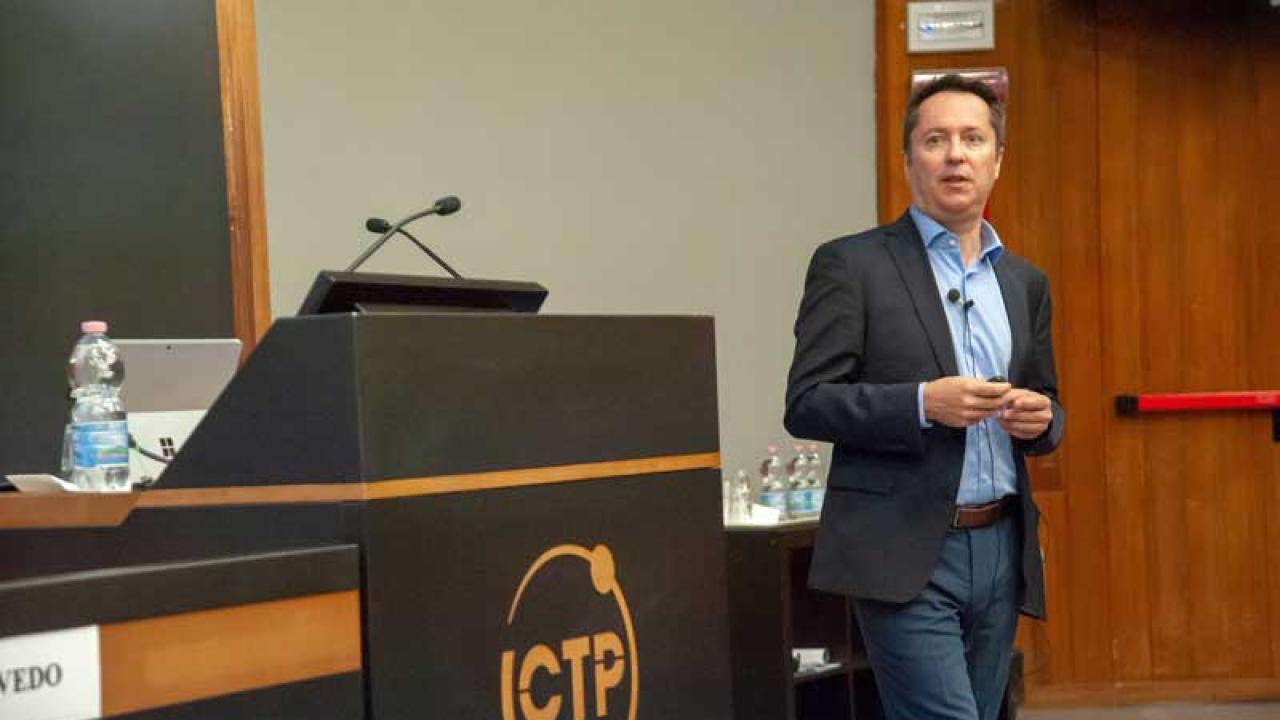
New technologies have a lot of potential transformative power: from ploughs to electricity to the internet, which just marked thirty years of existence. Many scientists see similar potential and promise in the science of quantum mechanics, which has already enabled tools like GPS and lasers. Quantum computing has grown from pure theory to prototype over the last several decades, and now the newly founded Trieste Institute for the Theory of Quantum Technologies (TQT), co-sponsored by ICTP, SISSA and the University of Trieste, aims to be a hub for this growing field. Ignacio Cirac of the Max-Planck Institut für Quantenoptik, Germany, was on hand to help inaugurate the new Institute, and shared some of the history and hopes for the growing field.
“Quantum technology is not only quantum computing,” Cirac says, “there are many things coming with that. And these are the things that, although at the moment not as prominent as quantum computing, will probably emerge later on.” Cirac's work has long focused on the quantum theory of information, and his work with Peter Zoller on ion trap quantum computation opened the door for the first quantum computer prototypes. But he is excited about possibilities beyond quantum computers. “When you use a computer, or you send data to space, there is theory behind that, the computer would not be possible without it,” says Cirac, adding, “Quantum information theory is still being developed and it’s a big challenge, but what I think is even more interesting is that now quantum information theory has made connections with many other areas of science.”
There are a lot of open questions and issues to occupy researchers. “We have prototypes of quantum computers that show that the principles are right and everything we understand works well,” says Cirac. “However, they are faulty, so the first question is how to make them less faulty, in order to have something that has applications.” As quantum computing develops and quantum computers get bigger, error correction is also important. “Error shouldn’t grow with your system size, so when your quantum computer gets bigger, still the error per gate has to stay the same: this is a huge technological challenge,” says Cirac. “And it would be nice to have better error correcting codes, which is another theoretical challenge.”
“My questions at the moment are: what happens when we have a quantum computer, what can we do with that? I would like to know more applications,” says Cirac. “And the second is before we reach that, can we still do something that is useful? But I am also interested in quantum information theory, and these relations to other areas of physics.”
One intriguing feature of quantum systems that influence every investigation is a property called entanglement. “Entanglement is correlated randomness. It’s like you throw a dice in Italy and one in Las Vegas at the same time, and they come up the same,” says Cirac. “Entanglement can be a complication but it’s also an opportunity. You can use this fact. Since this doesn’t happen in nature, only in this microscopic world, whenever we find something that occurs somewhere, it can be useful. So people have now figured out how to use entanglement to do things that are not possible with classical physics, such as encrypting messages.”
“Quantum computation now has joined forces with some other areas of science,” continues Cirac. “There is a language that is emerging that there is a new perspective to look at science and many problems. Whenever this has happened in the past, there were scientific revolutions, so I hope that this will not only create some devices but will also advance science.”
----- Kelsey Calhoun
















